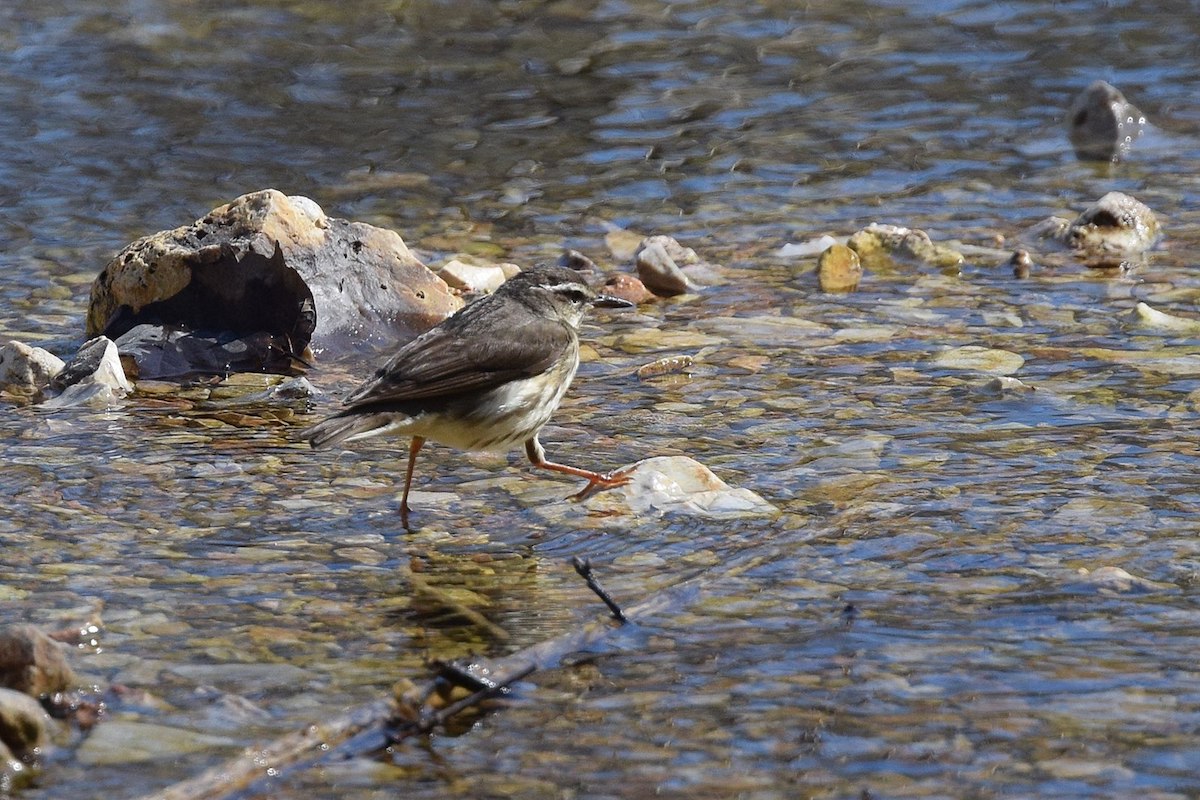One of the biggest unknowns about the shale gas boom is how it’s affecting wildlife. A new study from West Virginia University on a warbler that depends on clean streams is helping to change that.
The Louisiana waterthrush is one of the first migratory songbirds to appear in our region in the spring. It’s a little brown bird that bobs its tail and has a high-pitched call that can carry over the sounds of water. The Louisiana waterthrush breeds along forested headwater streams, and feasts on tiny invertebrates, like mayflies and crayfish, living in the water. So if something happens to the stream, the Louisiana waterthrush would be impacted.
LISTEN: “Study: Songbird that Needs Clean Streams Threatened by Fracking”
Mack Frantz is a Ph.D. candidate at West Virginia University and part of the USGS Cooperative Fish & Wildlife Research Unit. He recently published a journal article about the measurable effect of shale gas development on the bird.
“The Louisiana waterthrush is the proverbial canary in the coal mine,” Frantz says.

[click to enlarge] The photos at the bottom show examples of types of disturbance in an area undergoing shale gas development. (E) shows a section of stream considered disturbed from frequent vehicular activity; and (F) Sedimentation that researchers traced upstream to its point of origin at an active shale gas well pad. Source: American Ornithological Society
“It’s not really so much the placement of a well pad, but all of the infrastructure it takes in order to access that well pad and to transfer the gas — access road, pipelines, compressor stations,” Frantz explains. “So in areas where you used to have contiguous forested habitat, which is important to have for certain kinds of wildlife, that might be broken up.”
Frantz and the research team looked at aerial and satellite images of gas development, and spent hours in the field from 2009 to 2011 when unconventional drilling began and was peaking, and then again from 2013 to 2015. They also monitored waterthrush nests and territories. They found that nest survival decreased.
“So the probability that a nest is going to be successful over its 29 day nesting period, that was lower due to shale gas development,” Frantz says. “We also saw that shale gas-disturbed areas were producing less fledglings.”
Frantz says the riparian habitat quality also declined in areas where there was gas development. That means water quality in the streams, but also erosion of stream banks, and a loss of native plants. The study also suggests that Louisiana waterthrush have had to increase their range.
“They really like pristine forested areas,” Frantz says. “If you start to remove some of that forest cover, that’s going to affect their food resources. And so I think in part that’s what we’re seeing here: that the waterthrush are having to have larger territory to support their foraging needs, not only for themselves but for their nestlings.”
Frantz says that his research shows that it doesn’t take a very big disturbance to see significant negative effects on wildlife.
“The study area is still more than 91 percent forested,” he says. “Yet we’re still seeing these effects.”
Frantz hopes that their findings could be used to influence policy around the oil and gas industry.
“I’m not allowed to give management recommendations per se,” he says. “But we definitely need to evaluate [if we] should allow infrastructure and development this close to a forested headwater stream where our public drinking water comes from. So it is warranted to try to re-evaluate some of these regulations that are existing, and see if they need beefed up or if we need new ones.”
###

